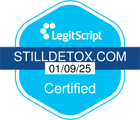How Crossfading Affects the Body and Mind
Combining alcohol and marijuana can amplify their individual effects, leading to significant impairment in cognitive and motor functions. Alcohol lowers inhibitions and slows reaction times, while marijuana alters perception and affects short-term memory. “Consuming alcohol before marijuana can increase THC absorption, intensifying its psychoactive effects. Conversely, using marijuana first may slow the rise of blood alcohol levels, delaying the sensation of intoxication and increasing alcohol consumption,” said Dr. Scott E. Lukas, psychiatry and pharmacology, Harvard Medical School. Source.
“Alcohol and marijuana affect the central nervous system differently, and their simultaneous use can result in compounded impairment. This combination significantly increases the risk of accidents and poor decision-making,” said Dr. Gary Wenk, psychology and neuroscience, Ohio State University. Source.
The Risks of Crossfading
Crossfading can lead to various adverse effects, including:
- Severe Intoxication: Combining these substances can intensify sedation, leading to extreme lethargy or unresponsiveness.
- Nausea and Vomiting: The interaction of alcohol and THC often triggers gastrointestinal distress.
- Anxiety and Paranoia: Amplified psychoactive effects may exacerbate anxiety or lead to panic attacks.
- Impaired Judgment: Heightened intoxication increases the likelihood of risky behaviors, such as driving under the influence.
The Centers for Disease Control and Prevention (CDC) warns that polysubstance use, including crossfading, exacerbates impairment, endangering not only the user but also others in their environment. Source.
Recognizing the Signs of Being Crossfaded
Individuals experiencing crossfading may show:
- Difficulty maintaining balance or coordination.
- Slurred speech and confusion.
- Nausea, vomiting, or excessive dizziness.
- Signs of severe intoxication, such as unresponsiveness.
What to Do If Someone Is Crossfaded
Dangerous intoxication from crossfading can present serious health risks, including irregular breathing, unconscious vomiting, or unresponsiveness. These situations require immediate medical attention to prevent potentially life-threatening outcomes. Ensuring a calm and safe environment while awaiting emergency services can be critical. “Polysubstance use increases unpredictability and heightens the risk of severe consequences,” said a spokesperson for the CDC, emphasizing the importance of timely intervention and awareness.
Prevention and Safer Practices
Avoiding simultaneous use of alcohol and marijuana is the safest choice. “Educating the public on the risks of crossfading is essential, as many users may not understand the amplified dangers involved,” said Dr. Lukas, psychiatry and pharmacology, Harvard Medical School.
Need Help? Contact Still Detox
If you or someone you know is struggling with polysubstance use or addiction, professional help is available.
Still Detox in Boca Raton, Florida, offers compassionate, evidence-based care for those dealing with substance abuse. Call us today at (561) 556-2677 to take the first step toward recovery.








